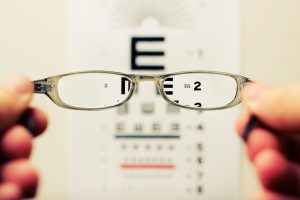Understanding Your Vision: A Closer Look at Your Prescription

If you’re new to the idea of wearing glasses, or if your prescription has changed recently, you might be left feeling a little confused about what all those measurements really mean. Even if you have been wearing glasses or contact lenses for years, you might have been satisfied with simply knowing whether you are short-sighted, long-sighted, or astigmatic. After all, all the detailed numbers and symbols aren’t really for you, right?
Then again, you might be curious about just what it takes to ensure your vision is clear and comfortable. And for that, understanding your prescription in more detail may be necessary.
Your prescription doesn’t simply tell you whether you are short- or long-sighted. Rather, it covers an array of abbreviations with decimal numbers, pluses and minuses, and strange symbols to boot. So, let’s take a deep dive into your prescription and work out the ins and outs of your vision.
Left Eye vs Right Eye
When looking at your prescription, you may see the abbreviations OS (oculus sinister) and OD (oculus dextrus). While the Latin translation can make this sound complicated, oculus sinister simply means “left eye” while oculus dextrus means “right eye. You may see your eyes referred to more simply by the abbreviations RE (right eye) and LE (left eye) and sometimes not at all.
Thankfully, the rest of your prescription will avoid Latin altogether… But that doesn’t necessarily mean it will all be easy to understand. After all, you still have headings like SPH, CYL, Axis, Prism, Base, and ADD to contend with. So, let’s get to work translating these titles.
SPH – Sphere
The sphere (denoted as SPH) indicates the amount of additional lens power you need to correct your myopia or hyperopia. This refers to the fact that correction is “spherical”, or equal in all meridians of the eye.
The sphere will be followed by a number, measured in dioptres. Dioptres is the unit of measurement for the refractive, or light-bending, power of the lens. This number will be either negative (-), indicating short-sightedness, or positive (+), indicating long-sightedness. Generally, the higher the number, the more correction is required to achieve clear vision.
CYL – Cylinder
In some cases, a “CYL” measurement may appear on your prescription. This stands for “cylinder” and indicates that correction is needed for an irregularly shaped cornea – otherwise known as astigmatism.
Again, the number here represents the lens power needed to correct the astigmatism. If the box is empty, that means there is no, or not enough, astigmatism present to necessitate correction.
This figure represents the difference in the greatest and weakest powers of the eye – usually separated by 90 degrees. Cylinder measurements also follow the general rule that the further the number is away from zero, the more lens power is required.
The number in the CYL column of your prescription may be preceded by a plus sign (+) to indicate long-sighted astigmatism, or a minus sign (-) to indicate short-sighted astigmatism.
Axis
Moving on to the “axis” – this describes the direction of the astigmatism, measured in degrees. The Axis number will be between 1 and 180, with 90 corresponding to the vertical meridian of the eye and 180 to the horizontal meridian. This number defines at what angle your glasses lenses should be positioned in the frame.
Prism and Base
Only present in a small number of prescriptions, the “prism” measurement describes how much prismatic power you need to compensate for eye alignment problems. Prism correction is used to correct the vision of people with diplopia (double vision).
The prism helps to align the two images and combine them into one clear image. The “base” indicates the direction of the prism. For example, this may be up, down, towards your nose, or towards your ears. This is represented by four abbreviations: BD (base down), BU (base up), BI (base in), and BO (base out).
ADD
Finally, if you require reading glasses (as we all inevitably will), you may see “ADD” on your prescription. This figure describes the added magnifying power needed to allow you to focus on objects at close distances.
Depending on the severity of the ADD value, ranging from +0.75 to +3.00 D, you may need bifocal or varifocal lenses.
If you’d like to learn more about your prescription – or do away with the need to understand it once and for all – get in touch with one of our friendly clinic coordinators or Book a Consultation to find out whether you could be suitable for Laser Eye Surgery.


